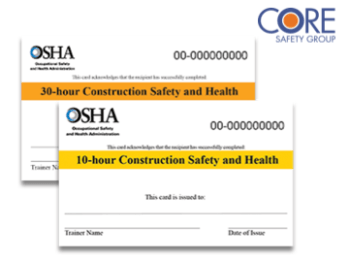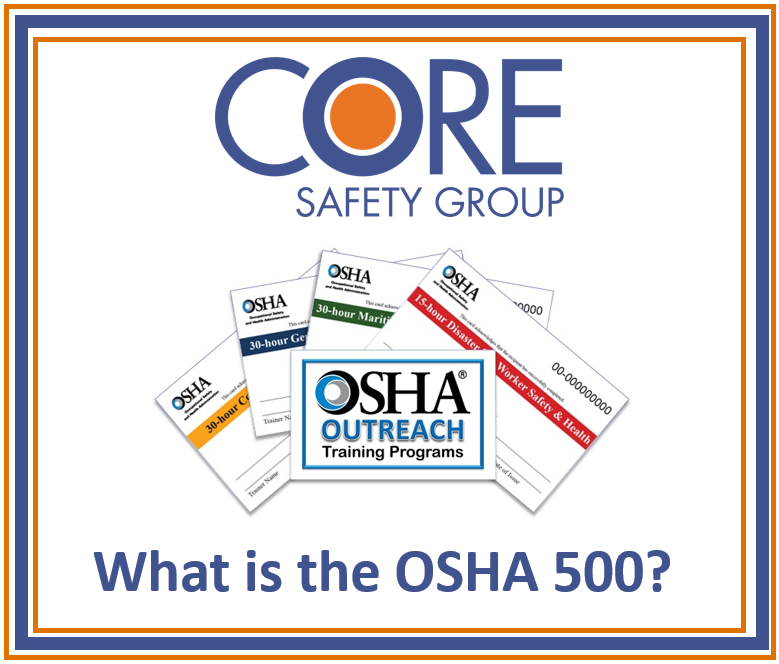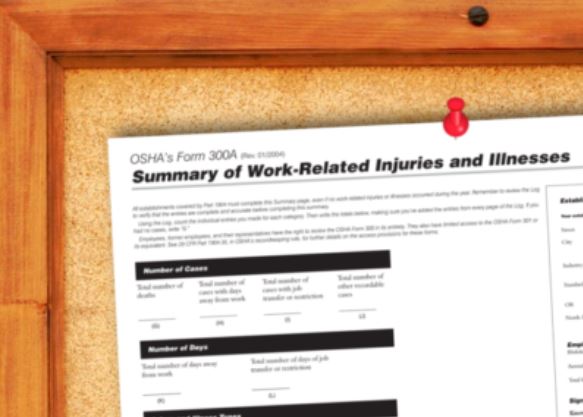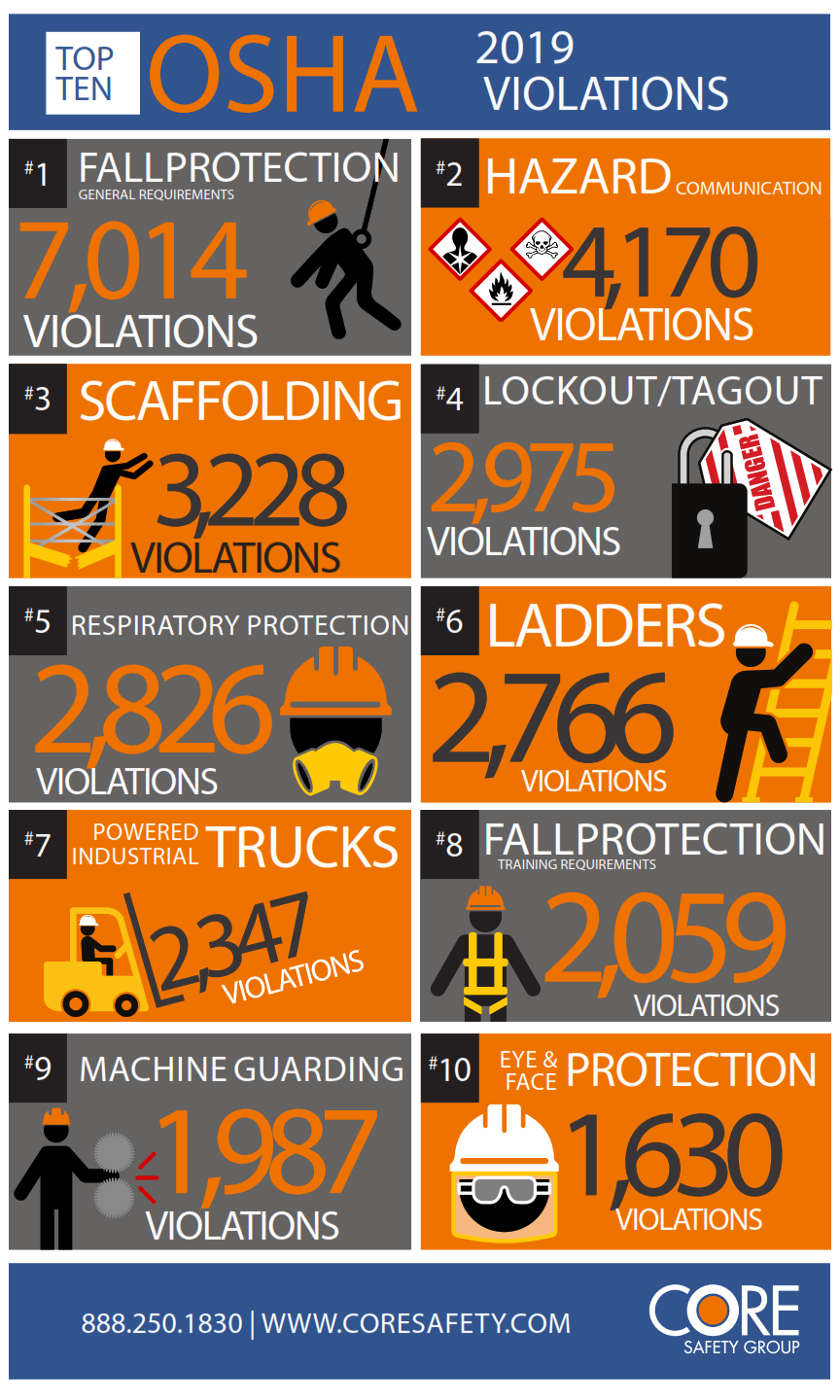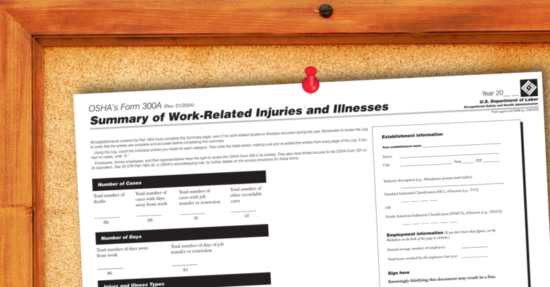
3 Factors for An Effective Safety Program. 1. Have A Policy 2. Employee Training. 3. Implementation. Learn more by watching our video!

Do you need an onsite safety professional? There are several factors that may trigger the need for a full-time onsite safety professional. CORE Safety’s Bill French reviews when you might consider full-time safety support on your next project.

Your OSHA card will never expire, but your employer may require you to retake the course every three to five years to refresh your knowledge and stay up-to-date with OSHA safety standards. If your OSHA card was issued more than five years ago, some employers may not accept it. It is always a good idea to take the course every couple years to see what has changed. If you need help with your training call us and we will be happy to assist.

It’s that time of year when this should be at the top of every company’s to do list. Your OSHA 300A’s should be complete and ready to be posted on February 1st through April 30th. And for companies with 250 or more employees that are currently required to keep OSHA logs, and establishments with 20-249 employees that are classified in certain industries with historically high rates of occupational injuries and illnesses, those companies must also upload their 300A information using OSHA’s online injury tracking application. The due date for your online reporting of 2019 information is March 2nd.
Unfortunately, there are still companies that are unfamiliar with the requirements of OSHA’s injury and illness recordkeeping. If your group needs help to ensure that you’re in compliance with record keeping requirements or would like assistance using OSHA’s online reporting application, Call CORE Safety.

Download our 2019 OSHA Violation Poster!
For the ninth consecutive year Fall Protection (General Requirements) is OSHA’s most frequently cited standard. Here is the full list for 2019!
1. Fall Protection – General Requirements (7,014)
2. Hazard Communication (4,170)
3. Scaffolding (3,228)
4. Lockout/Tagout (2,975)
5. Respiratory Protection (2,826)
6. Ladders (2,766)
7. Powered Industrial Trucks (2,347)
8. Fall Protection – Training Requirements (2,059)
9. Machine Guarding (1,987)
10. PPE – Eye and Face Protection (1,630)
Contact us to learn how we can keep your workplace in compliance with OSHA standards!

Employers are reminded of their obligation to post a copy of OSHA’s Form 300A, which summarizes job-related injuries and illnesses logged during 2018. Each year, from Feb. 1 to April 30, the summary must be displayed in a common area where notices to employees are usually posted. Businesses with 10 or fewer employees and those in certain low-hazard industries are exempt from OSHA recordkeeping and posting.
Also, establishments with 20-249 employees in certain high-risk industries must submit information from their 2018 Form 300A by March 2, 2019. OSHA has provided a secure website that offers options for data submission. Visit the OSHA’ Injury Tracking Application (ITA).


OSHA recently announced that it is softening a hardline approach adopted during the previous administration restricting the use of post-accident drug testing.
OSHA sent a memo to its regional administrators on October 11th that supplies a more permissive interpretation of its regulation prohibiting employers from discharging or discriminating against employees for reporting a work-related injury.
Previously, the agency had declared that employers could not use “drug testing (or the threat of drug testing) as a form of adverse action against employees who report injuries or illnesses.”
Employers were limited to using drug testing only when there was a “reasonable possibility” that drugs or alcohol contributed to the accident or injury. The earlier OSHA decision had assumed that regardless of employers’ intent, the threat of a drug test would intimidate employees into not reporting accidents.
In this memo, the new OSHA leadership declared that the existing rule will not be interpreted as prohibiting the implementation of post-incident drug testing.
OSHA further declared that as far as it was concerned most instances of workplace drug testing are permissible.
Examples being:
- Random drug testing.
- Drug testing unrelated to the reporting of a work-related injury.
- Drug testing under a state workers’ compensation law.
- Drug testing under other federal law, such as US DOT. OR,
- Drug testing to evaluate the root cause of a workplace incident that harmed or could have harmed employees.
If the employer chooses to use drug testing to investigate the incident, the employer should test all employees whose conduct could have contributed to the incident, not just employees who reported injuries.
Follow the link below to our YouTube video to watch our full recap of OSHA’s new memo.
Source from EHS today.



